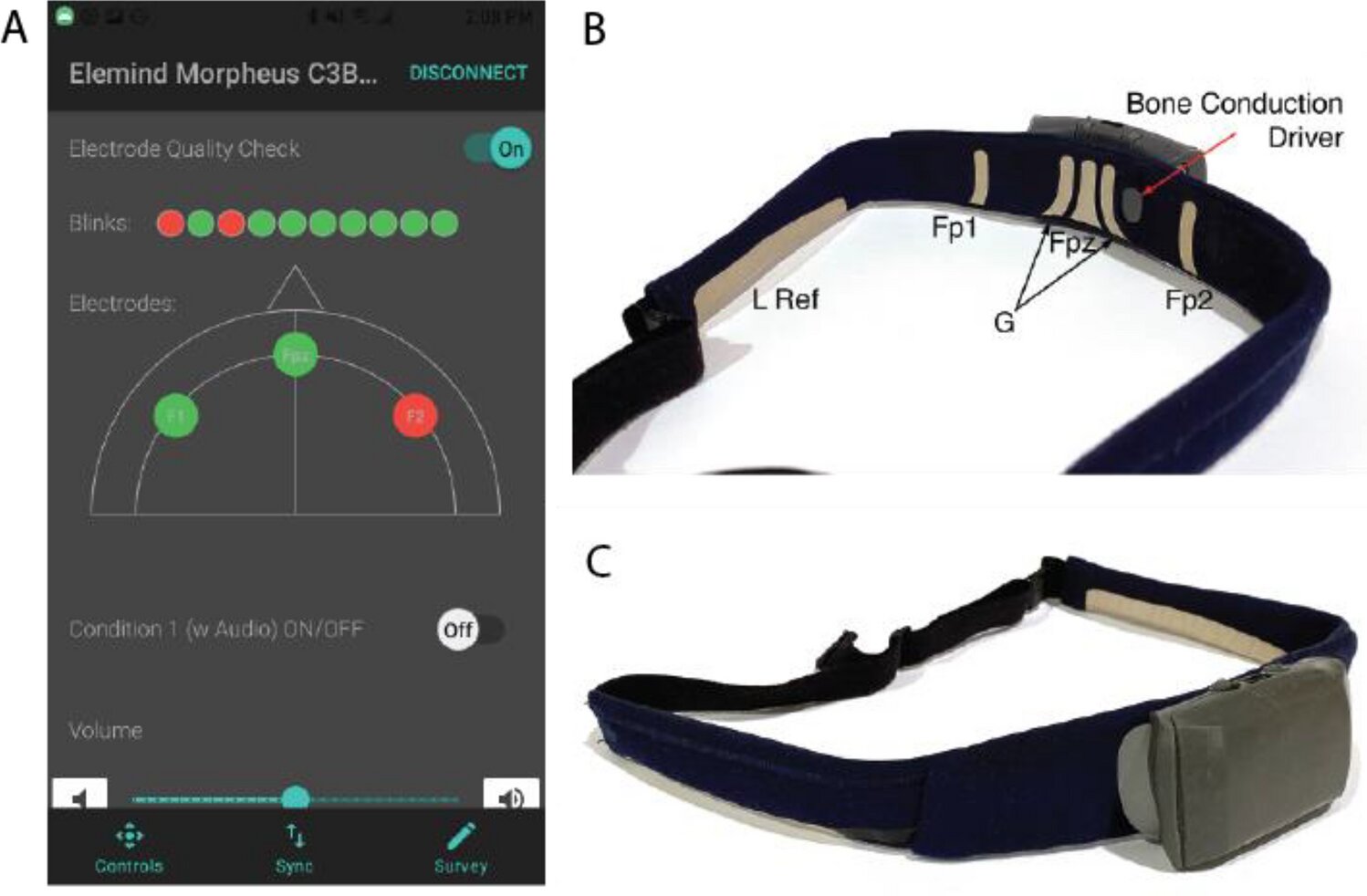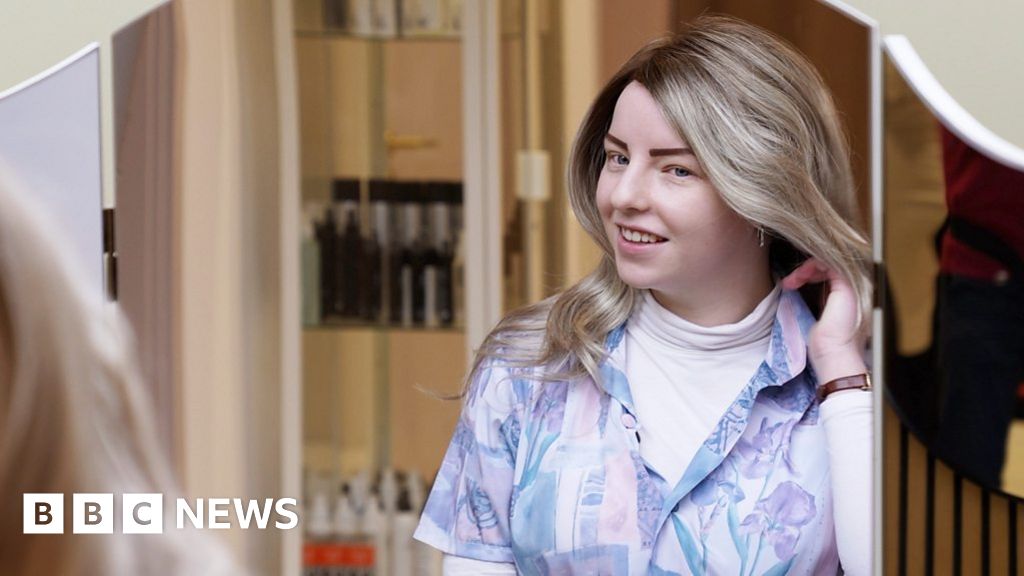
Do you ever toss and turn in bed after a long day, wishing you could just program your brain to turn off and get some sleep? That may sound like science fiction, but that’s the goal of the startup Elemind, which is using an electroencephalogram (EEG) headband that emits acoustic stimulation aligned with people’s brainwaves to move them into a sleep state more quickly.
Published in Scientific Reports, a small study of adults with sleep onset insomnia, 30 minutes of stimulation from the device decreased the time it took them to fall asleep by 10 to 15 minutes. This summer, Elemind began shipping its product to a small group of users as part of an early pilot program.
The company, which was founded by MIT Professor Ed Boyden ’99, MNG ’99; David Wang ’05, SM ’10, Ph.D. ’15; former postdoc Nir Grossman; former Media Lab research affiliate Heather Read; and Meredith Perry, plans to collect feedback from early users before making the device more widely available.
Elemind’s team believes their device offers several advantages over sleeping pills that can cause side effects and addiction.
“We wanted to create a nonchemical option for people who wanted to get great sleep without side effects, so you could get all the benefits of natural sleep without the risks,” says Perry, Elemind’s CEO.
“There’s a number of people that we think would benefit from this device, whether you’re a breastfeeding mom that might not want to take a sleep drug, somebody traveling across time zones that wants to fight jet lag, or someone that simply wants to improve your next-day performance and feel like you have more control over your sleep.”
From research to product
Wang’s academic journey at MIT spanned nearly 15 years, during which he earned four degrees, culminating in a Ph.D. in artificial intelligence in 2015. In 2014, Wang was co-teaching a class with Grossman when they began working together to noninvasively measure real-time biological oscillations in the brain and body.
Through that work, they became fascinated with a technique for modulating the brain known as phase-locked stimulation, which uses precisely timed visual, physical, or auditory stimulation that lines up with brain activity.
“You’re measuring some kind of changing variable, and then you want to change your stimulus in real time in response to that variable,” explains Boyden, who pointed Wang and Grossman to a set of mathematical techniques that became some of the core intellectual property of Elemind.
Phase-locked stimulation has been used in conjunction with electrodes implanted in the brain to disrupt seizures and tremors for years. But in 2021, Wang, Grossman, Boyden, and their collaborators published a paper showing they could use electrical stimulation from outside the skull to suppress essential tremor syndrome, the most common adult movement disorder.
The results were promising, but the founders decided to start by proving their approach worked in a less regulated space: sleep. They developed a system to deliver auditory pulses timed to promote or suppress alpha oscillations in the brain, which are elevated in insomnia.
That kicked off a years-long product development process that led to the headband device Elemind uses today. The headband measures brainwaves through EEG and feeds the results into Elemind’s proprietary algorithms, which are used to dynamically generate audio through a bone conduction driver. The moment the device detects that someone is asleep, the audio is slowly tapered out.
“We have a theory that the sound that we play triggers an auditory-evoked response in the brain,” Wang says. “That means we get your auditory cortex to basically release this voltage burst that sweeps across your brain and interferes with other regions.
“Some people who have worn Elemind call it a brain jammer. For folks that ruminate a lot before they go to sleep, their brains are actively running. This encourages their brain to quiet down.”
Beyond sleep
Elemind has established a collaboration with eight universities that allows researchers to explore the effectiveness of the company’s approach in a range of use cases, from tremors to memory formation, Alzheimer’s progression, and more.
“We’re not only developing this product, but also advancing the field of neuroscience by collecting high-resolution data to hopefully also help others conduct new research,” Wang says.
The collaborations have led to some exciting results. Researchers at McGill University found that using Elemind’s acoustic stimulation during sleep increased activity in areas of the cortex related to motor function and improved healthy adults’ performance in memory tasks. Other studies have shown the approach can be used to reduce essential tremors in patients and enhance sedation recovery.
Elemind is focused on its sleep application for now, but the company plans to develop other solutions, from medical interventions to memory and focus augmentation, as the science evolves.
“The vision is how do we move beyond sleep into what could ultimately become like an app store for the brain, where you can download a brain state like you download an app?” Perry says. “How can we make this a tool that can be applied to a bunch of different applications with a single piece of hardware that has a lot of different stimulation protocols?”
More information:
C Scott Bressler et al, A randomized controlled trial of alpha phase-locked auditory stimulation to treat symptoms of sleep onset insomnia, Scientific Reports (2024). DOI: 10.1038/s41598-024-63385-1
This story is republished courtesy of MIT News (web.mit.edu/newsoffice/), a popular site that covers news about MIT research, innovation and teaching.
Citation:
Headband helps people fall asleep by aligning audio signals with brainwaves (2024, September 26)
retrieved 28 September 2024
from https://medicalxpress.com/news/2024-09-headband-people-fall-asleep-aligning.html
This document is subject to copyright. Apart from any fair dealing for the purpose of private study or research, no
part may be reproduced without the written permission. The content is provided for information purposes only.



